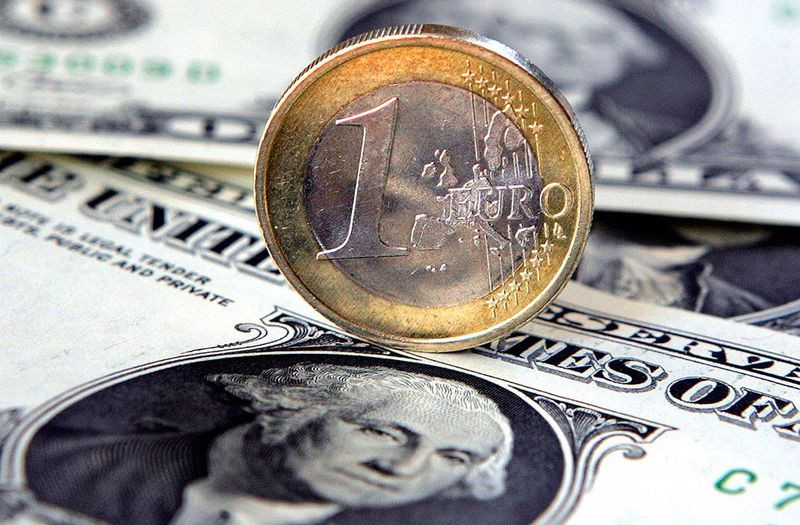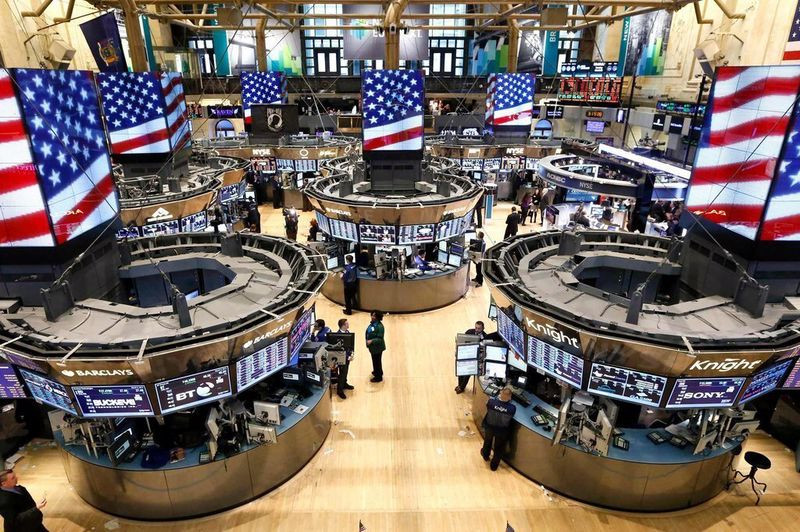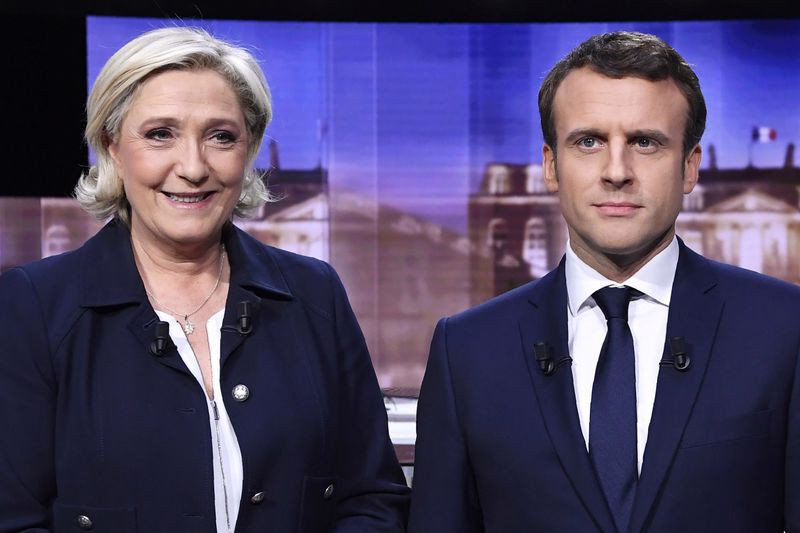
The dollar seems to have taken a pause in growth, and the single European currency was able to find ground under its feet.
On Wednesday, the greenback climbed to 101.03 - a level not seen since March 2020 - before turning down.
The dollar loosened its grip, tracking a decline in the 10-year U.S. Treasury yield, which fell below 2.87% after hitting its strongest level since late 2018 near 3%.
According to some experts, this development suggests that the yield rally in the United States may be on its last legs, and it will be difficult for the dollar to rise higher.
However, the current weakness in the USD looks more like a technical correction than the start of a downward trend, as the factors that recently drove the US currency to two-year highs remain in place.
Investors are in no hurry to get away from the protective dollar against the backdrop of geopolitical problems, as well as worsening forecasts for the global economy.
On Monday, the World Bank cut its 2022 global growth forecast by nearly a full percentage point, from 4.1% to 3.2%.
"We are starting our spring meeting against the backdrop of severe, overlapping crises. It's the coronavirus, inflation and Russia's special operation in Ukraine," said World Bank President David Malpass.
The financial institute believes that the European continent will feel the most significant impact of the conflict between Kyiv and Moscow.

A similar view is shared by the International Monetary Fund (IMF), which cut its estimate for global economic growth in 2022 to 3.6% from 4.4% on Tuesday.
At the same time, the revision of the forecast for US GDP turned out to be relatively modest compared to the same eurozone, where economic growth is expected by the end of this year by 2.8% against the previous estimate of 3.9%. The recovery of the US economy, as predicted by the IMF, this year will be 3.7% against 4.0% in the previous forecast.
A military conflict in eastern Europe is expected to further increase inflation, and further tightening of Western sanctions against Russia aimed at energy exports will lead to another serious drop in world production, according to the latest review of an authoritative organization.
IMF specialists have warned that changes in central banks' balance sheets could create additional problems.
The European Central Bank has so far committed to stop buying net assets later this year. The balance sheet could still shrink in the coming months if banks repay long-term loans, as many analysts expect.
Meanwhile, the Federal Reserve could be more aggressive if it moves from just maturing securities later this year to selling some assets outright to speed up the process.
The Fed's hawkish turn not only sets the greenback sails, but also undermines key support for US equities as US real yields surged into positive territory for the first time in two years.

Yields on 10-year inflation-protected Treasuries (TIPS), also known as real yields, have been in negative territory since March 2020, when the Fed cut interest rates to near zero. The situation changed on Tuesday, when real yields rose above zero.
"Real returns over 10 years is a risk-free alternative to owning stocks. As real returns rise, this makes the stock less attractive," said Barry Bannister, Stifel strategist.
He estimates that the S&P 500 could retest its year lows, which included a 13% drop in March from the index's all-time high in January, if real 10-year bond yields rise to 0.75% and earnings forecast - the key component of the risk premium will remain unchanged.
Stocks shrugged off rising returns on Tuesday, with the S&P 500 gaining 1.6% on the day after falling in the previous two trading sessions.
The attention of market participants was focused mainly on corporate reporting for the first quarter.
Of the first 49 S&P 500 companies to report quarterly earnings, 79.6% beat estimates, according to Refinitiv data.
So far, the financial position of the companies is protected, as they have largely been able to pass on the increased costs to consumers. However, the longer prices remain elevated and the longer the war in Ukraine continues, the more likely a tipping point will occur, says Brian O'Reilly of Mediolanum International Funds.
"Companies cannot shift production costs indefinitely. Someday everything will reach a critical point," he said.

High valuations also leave stocks vulnerable if real returns continue to rise. Although the fall in stocks this year has pushed valuations down, the S&P 500 is still trading at about 19 times earnings estimates, compared to a long-term average of 15.5, according to Refinitiv.
"Current real bond yields near zero are not high enough to significantly challenge equities. If bond yields continue to rise, this could end up being a problem for stocks," JPMorgan said.
US stock indices are mostly trading in the green zone on Wednesday: S&P 500 adds about 0.3%.
The corporate reporting season continues in the US. So far, the financial results have largely exceeded the expectations of experts. This supports stock prices amid concerns about the Fed's plans to continue raising interest rates in order to fight inflation.
These fears, in turn, keep the US currency afloat.
Allianz chief economist Mohamed El-Erian believes that the peak of inflation in the US has not yet passed, and the Fed may have to raise the target level from 2% to avoid reputational damage.
Oxford Economics also believes that inflation in the United States has not yet reached its peak and may accelerate to 9% from 8.5% in March. Later, the indicator will begin to move away from peak values and by the end of the year will drop to 5%, experts say.

"We need to make clear progress in easing inflationary pressures, otherwise we would need to worry a lot more about how much we have to do," said Chicago Fed President Charles Evans, adding that if core inflation stays at 3.5% , the Fed may need to raise rates above the neutral level.
"The Fed may raise the key rate to 2.25%-2.5% by the end of the year, and then assess the state of the economy. If inflation remains high, further rate hikes are likely to be needed," he said.
Investors' minds have been preoccupied with inflation worries for months, reflected in a sharp rise in US Treasury yields.
Despite the recent decline, 10-year Treasury yields are still staying near three-year highs and could rise further as more US central bankers point to a sharp hike in interest rates to come.
Policy divergences between the Fed and low-yielding central banks, including the ECB, continue to support dollar strength, ING analysts said. They believe that EUR/USD may test 1.0700 shortly after the second round of elections in France approaches, while the situation in Ukraine remains highly volatile.
Economists at Nordea also expect the EUR/USD to fall further.
"The euro will remain vulnerable until there is a change for the better in the situation in Ukraine. Tensions between Europe and Russia support high uncertainty about the single currency and the economic outlook in the euro area. We expect EUR/USD to drop to 1.0500 over the next three months," Nordea said.
The focus remains on the French presidential election as the current owner of the Elysee Palace, Emmanuel Macron, and far-right challenger Marine Le Pen are set to hold debates later today.
This debate could be decisive in the intense race to rule the country for the next five years.

Credit Suisse sees the second round of voting in France on April 24 as an important risk event for the EUR/USD pair.
"A win by Le Pen could easily push the EUR/USD pair through the lower end of our target range at 1.0750, setting an immediate target at the March 2020 lows at 1.0636 and likely at 1.0500," noted bank strategists.
"Macron's victory, although largely expected, could probably lead to some relief, allowing the EUR/USD pair to rise to late March lows around 1.0950. However, in this scenario, it is unlikely that we will rush to revise our bearish views on EUR/USD, especially in light of a more dovish than expected ECB rate decision last week," they added.
The main currency pair closed almost unchanged on Tuesday and ended yesterday's trading with a symbolic increase of 0.06%, near 1.0788.
Taking advantage of a pause in the dollar's rally, it continued its upward momentum on Wednesday, trading above 1.0800.
"Has the euro already bottomed out? We can't necessarily assume that," Commerzbank analysts said.
"First of all, the risk of an energy crisis putting pressure on the eurozone economy has not yet been overcome. Secondly, the market may react to the ECB's hesitant approach to fighting inflation and put pressure on the euro accordingly. At some point in time, the market seems to be confident that the ECB is likely to raise its key rate in the autumn. However, the euro can only recover when certainty grows. At the moment, the market does not have such confidence, therefore, bearish risks dominate in relation to the euro," the bank said.
EUR/USD's vigorous rebound from below 1.0800, where it traded yesterday at 1.0760, to the 1.0850 area gives the impression that the pair's decline may be nearing its end. However, the factors that recently brought the euro to its weakest levels in about two years remain in play.
The combination of a strong fundamental picture in the US, elevated inflation in the country, treasury yields at more than 3-year highs and a difficult situation on the geopolitical front speak in favor of further strengthening of the dollar.
Against the backdrop of a pause in risk aversion, the EUR/USD pair is demonstrating corrective growth. If pessimists begin to dominate the financial markets in the coming days, the greenback may gain strength again and limit the pair's growth.
Immediate support lies at 1.0820, followed by a round 1.0800 and a recent 2022 low at 1.0760.
Initial resistance lies at 1.0865, followed by 1.0920 and 1.0970.





















